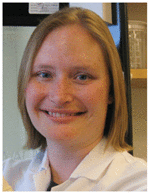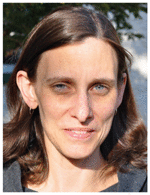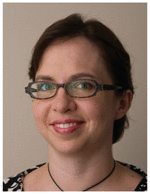Abstract
At stake in the May 2013 publication of the Diagnostic and Statistical Manual of Mental Disorders, Fifth Edition (DSM-5), are billions of dollars in insurance payments and government resources, as well as the diagnoses and treatment of millions of patients. We argue that the most recent revision process has missed social determinants of mental health disorders and their diagnosis: environmental factors triggering biological responses that manifest themselves in behavior; differing cultural perceptions about what is normal and what is abnormal behavior; and institutional pressures related to such matters as insurance reimbursements, disability benefits, and pharmaceutical marketing. In addition, the experts charged with revising the DSM lack a systematic way to take population-level variations in diagnoses into account. To address these problems, we propose the creation of an independent research review body that would monitor variations in diagnostic patterns, inform future DSM revisions, identify needed changes in mental health policy and practice, and recommend new avenues of research. Drawing on the best available knowledge, the review body would make possible more precise and equitable psychiatric diagnoses and interventions.
The American Psychiatric Association is releasing the Diagnostic and Statistical Manual of Mental Disorders, Fifth Edition (DSM-5), in May 2013. The manual is the association’s comprehensive guide to the classification of mental disorders, and the work’s criteria are the most commonly used in US mental health care as well as in international mental health research.1
The identification and diagnosis of mental disorders are controversial and weighty topics. Mental disorders are complex, and knowledge about their causes and contributing factors is still evolving. Historically, the diagnosis of mental health disorders has been based more on patients’ symptom reports and behavior than on specific, measurable biomarkers. The DSM plays an integral role in mental health treatment because revisions to the guide can in effect usher diseases in and out of existence with the stroke of a pen, a factor that can have a profound effect on individuals and institutions.
For an individual, a new diagnosis of a mental disorder can carry a stigma that may affect personal relationships, career opportunities, and self-perception. Revisions to the manual can also open and close individuals’ opportunities for treatment, since insurance coverage and government resources are typically allocated on the basis of DSM diagnoses.
Although the DSM-5 Task Force draws on outstanding clinical expertise in defining disorders, we believe that there is a need to inform future updates of the DSM with science that embraces the role of social and economic determinants and influences in illness and its diagnosis. As we discuss below, these determinants and influences are critically important, yet they have not received sufficient attention in the process of producing updates to the DSM. We therefore propose the formation of a research review body that would systematically examine studies of social determinants of both mental illness and mental illness diagnoses to assess their implications for DSM revisions, mental health policy, and future research.
Background: Creation Of The DSM-5
The DSM-5 Task Force was convened by the American Psychiatric Association. Its working groups of recognized national and international experts reviewed diagnostic criteria for mental disorders, reviewed relevant research findings, recommended changes to the criteria for diagnoses and to the names of diagnoses, and recommended the creation of new diagnoses or the elimination of existing ones.
For example, the DSM-5 Task Force recently considered proposed revisions to the criteria for subtypes of autism, depression, and psychosis. The changes were predicted to disqualify half of those who currently receive benefits for autism spectrum disorders; to newly diagnose millions of people with mood disorders; and to lead to new prescriptions for antipsychotic medication for the 70–80 percent of people who report having odd thoughts or hallucinations to their doctors but who heretofore have not qualified for a psychotic disorder diagnosis.2 After vocal public and professional resistance to these changes, the DSM-5 Task Force largely backed down from these proposed diagnostic changes.3
For institutions such as public and private hospitals and clinics, as well as for individual health professionals and pharmaceutical manufacturers, reimbursements for services and products depend on insurance coverage. A change in the DSM that causes insurers to drop or add coverage for a condition can cause providers and others to alter the diagnoses they record and, as a result, the treatments they offer. Thus, the release of the new edition of the DSM, which promises to incorporate a host of scientific advances to reflect new understandings of mental disorders, is a highly anticipated event that will have wide-ranging implications.
The DSM-5 revisions are taking place at a time when there is increasing public scrutiny of the accuracy and integrity of psychiatric diagnoses and growing awareness of the role that social and economic influences can play, both in the incidence of disease and in its diagnosis. These factors go beyond the reach of biological science and psychiatry and are not adequately accounted for in the understanding of disease currently promoted by the DSM and its revision process.
Examples of how social environments can influence the rates of mental disorders abound. For example, exposure to the stress of living in a time of war has affects not only rates of post-traumatic stress disorder4 but also rates of schizophrenia among children who were in the womb when their mothers were exposed.5,6
An example of how diagnoses are also subject to nonmedical factors can be seen in the pharmaceutical industry’s promotion of diagnoses—such as attention deficit hyperactivity disorder7 and restless leg syndrome8—and medications to treat them, as discussed below. Concerns about the influence of the pharmaceutical industry has led the American Psychiatric Association and the National Institute of Mental Health to call for reduced corporate sponsorship of psychiatric education and research.9,10
Categorizing Mental Disorders
Over the years the DSM has used different bases to determine what constitutes a mental disorder. In 1952 the first edition categorized patients according to psychoanalytic theories. In 1980 the third edition shifted to diagnoses based on the number and severity of symptoms, such as changes in mood, appetite, and sleep. And in 2000 many of the experts convened to create the fifth edition aspired to align diagnostic criteria with changes in the central nervous system that underlie mental disorders.
The DSM-5 Task Force was preoccupied with establishing a neuroscientific basis for diagnosis, meaning that the group’s members sought to identify specific, measurable neurological phenomena that could be linked to the behaviors and conditions that constitute mental disorders. In practice, however, the DSM’s diagnoses continue to be organized around symptom clusters, because evidence about the biological mechanisms involved remains insufficient.11,12
Given the importance of social influences on diagnostic patterns, however, mental health leaders—including those revising the DSM—should go a step further and understand how social and institutional processes shape both the epidemiological distribution of disorders in the population and the way that disorders are identified and labeled. This understanding is important because it is often difficult to distinguish between changes in the incidence of disorders and changes in their identification.
It is also important because diagnoses spawn debates about which signs, symptoms, and behaviors are pathological and which are normal. The outcome of such debates affects how ordinary people think about their problems and also affects treatment, insurance coverage, institutions, and populations.
For example, children are three to four times more likely to be diagnosed with attention deficit hyperactivity disorder by a US provider using DSM-4 than by a European provider using the International Classification of Diseases, Tenth Revision.13 Consequently, 4 percent of children in the United States are prescribed stimulants for the condition, while only 0.3 percent of children in the United Kingdom are.14 The US Centers for Disease Control and Prevention recently reported an increase of 41 percent in diagnoses of attention deficit hyperactivity disorder in the United States between 2002 and 2012 and noted that 11 percent of all school-age children have been diagnosed with the disorder.15
In addition, pharmaceutical manufacturers often promote diagnoses to create a large market for their products. For example, depression awareness campaigns can foreshadow the marketing of antidepressants.16 And manufacturers’ distribution of attention deficit symptom checklists to teachers and parents of children in elementary schools was followed by 250–900 percent increases in stimulant prescription rates between 1990 and 1995.7
The ethnicity and socioeconomic status of patients also affect the application of DSM diagnostic criteria.17 Well-known examples include the overdiagnosis—in comparison to other groups—of psychotic disorders in black patients and of mood disorders in Hispanic patients. This overdiagnosis is thought to stem from many factors. For example, populations may have different rates of the disorders. However, some of the factors involved in their overdiagnosis, such as providers’ ethnic stereotypes and the varying ways patients from different cultures present their symptoms, can lead to inappropriate diagnoses and inequalities in access to and appropriateness of care.18,19
Social And Institutional Influences On Diagnoses
Psychiatric conditions result from a combination of biological and environmental factors. For instance, higher rates of depression in women than in men have been linked to differences between the sexes in physiological responses to stress, in reproductive hormones,20 and in exposure to violence,21 as well as to the targeting of women in mental health outreach and antidepressant advertising campaigns.22 Women may also be more likely to be diagnosed because they are more likely than men to see a doctor, whether or not they are depressed.23,24
Given ethnic, sex, and class differences in diagnosis and treatment,7 as well as the increasing number of prescriptions for psychotropic medications nationally and globally,25 researchers should intensify their focus on the institutional, social, and cultural determinants of diagnoses. Doing so would enable mental health providers to understand the full range of causes of mental disorders and reduce bias in diagnoses.
Research along these lines can clarify whether differences in disease diagnosis across groups result from the diagnostic criteria, the way the criteria are applied, or environmental factors that influence people’s susceptibility to disorders. These factors have different implications for DSM revisions, as well as mental health policy and practice. Below we describe four types of environmental influence on mental disorders and their diagnosis.
ENVIRONMENTAL EXPOSURE
Some disorders are strongly associated with exposure to certain social environments. One example is post-traumatic stress disorder among those exposed to warfare. However, not all combatants are equally likely to develop the disorder. It is more likely to occur among people who have experienced trauma in the past, are members of ethnic minority groups, are immigrants, or have preexisting psychiatric symptoms.26,27 The disorder is less likely to occur among people with greater access to economic and social resources.28
People who are already vulnerable to mental disorders because of poverty or some other disadvantage are at an even more elevated risk of developing a mental disorder when exposed to psychological stressors. These interrelated factors are described by social theorists as the “causes of causes”29 and “risks of risks,”30 meaning that the fundamental causes are social inequalities that in turn cause disease, and that risks of one kind lead to risks of other kinds. The fundamental causes have implications for diagnosis and intervention, which might inform changes to institutions and policies to influence other changes at the population level, as well as how individuals are treated at the clinical level.
SOCIAL CONTEXT
The level of awareness of a disorder in a given community may influence the likelihood that the disorder will be diagnosed. For example, one of the strongest predictors of a diagnosis of autism is a child’s residential proximity to another child with the diagnosis, with clustering of diagnoses frequently occurring in higher-income regions.31 This suggests that learning about autism from a neighbor may increase rates of diagnosis and that autism may be underdiagnosed in low-income populations.
In these and similar cases, population-level interventions to improve the accuracy and equitable application of diagnoses would take into account the diagnoses’ social context and would therefore address the problem of systemic misapplication of diagnostic criteria. In the case of autism, interventions might include educational programs for practitioners, school staff, and parents that explain the diagnostic criteria and treatment options for autism.
Clinicians should be aware that parents who are knowledgeable about autism and who are seeking publicly funded treatment and other benefits for their children might describe the children’s symptoms in terms that fit autism’s diagnostic criteria. For autism and other disorders, the criteria themselves may make the diagnosis susceptible to bias by socioeconomic status and social circumstances. Identifying and understanding the causes of diagnostic disparities can lead to improved diagnostic criteria and their more accurate application.
INSTITUTIONAL AND POLICY FACTORS
Economic or policy constraints can influence psychiatric diagnoses. For example, insurance reimbursement rates that differ by diagnosis can lead providers to assign disease codes that allow them to bill for more lucrative diagnoses and treatments—a process known as “diagnosis creep.” In addition, patients may require severe psychotic diagnoses to be eligible for disability benefits. Such factors may partially explain why the rate of growth in the number of children and young adults receiving Social Security benefits for psychiatric disabilities has increased dramatically since the 1996 Personal Responsibility and Work Opportunity Act reformed the welfare system.32,33
The trend has led Marcia Angell, the former editor of the New England Journal of Medicine, to suggest that many low-income families are “finding that applying for Supplemental Security Income (SSI) payments on the basis of mental disability is the only way to survive.” She quotes David Autor, an economics professor at the Massachusetts Institute of Technology, as saying that these payments have “become the new welfare.”34
The forces that influence diagnoses can have major consequences for payers and patients. Physicians are increasingly treating a range of problematic behaviors, including attentional and compulsive disorders in addition to psychoses, with second-generation antipsychotics that have side effects that include diabetes, high cholesterol, and significant weight gain.35 Studies have found that children insured by Medicaid were 4 times more likely to receive antipsychotic medications than children with private insurance36 and that children receiving Social Security disability benefits were 2.6 times more likely than other children to receive antipsychotics, mostly for attention deficit hyperactivity disorder and disruptive behavior disorder.37
The disproportionate use of high-risk medications by low-income children calls for an investigation of the interplay between diagnostic incentives and public policy.
PUBLICITY AND MARKETING
The pharmaceutical industry is one of the most profitable in the United States, with $300 billion in sales in 2009. Furthermore, US consumers account for almost half of the global spending on pharmaceuticals.38 In 2010 one in five Americans was taking at least one prescribed psychiatric medication, and sales of antipsychotics, antidepressants, and stimulants used to treat attention deficit hyperactivity disorder totaled $35 billion.39
Large investments are made in the promotion of pharmaceuticals, with one study estimating that 24.4 percent of pharmaceutical revenues are spent on promotion.40 A popular marketing strategy is to publicize DSM diagnoses before the arrival in the marketplace of new medications approved to treat them. For instance, the DSM-5 Task Force proposed including restless leg syndrome in its sleep disorders section.41 This proposed change to the DSM was not widely known among physicians until the manufacturers of Requip used the diagnosis in marketing, before the Food and Drug Administration approved the drug as a treatment for the condition.42 Direct-to-consumer advertising, another successful marketing strategy,43 alerts the public to behaviors or emotional states that may be symptoms of a diagnosable disorder.44
In the 1990s national working groups on psychiatry and culture launched initiatives to account for cultural variation in the presentation and definition of mental illness.45,46 These working groups, convened by the American Psychiatric Association and the National Institute of Mental Health, led to the DSM-4 Text Revision’s “Outline for a Cultural Formulation.”47 This outline teaches mental health providers how to take patients’ cultural beliefs and practices into account during interviews, so that the resulting diagnoses will be more accurate.
The outline’s section on culture-bound syndromes also characterizes symptom clusters that are common in specific cultural groups, such as ataque de nervios (“attack of nerves,” in English)—a group of symptoms including panic, fear, uncontrollable crying, shouting or aggression, dissociation, and sensations of heat—among Caribbean and Latin American people.
A Psychiatric Diagnosis Review Body
The review body we propose would expand the scope of such initiatives to include the influence of social groups, institutions, and policies on diagnostic patterns. Specifically, we recommend the formation of an interdisciplinary group of researchers that would monitor population-level data on variations in psychiatric diagnosis and coordinate research on the institutional, social, and cultural causes of those variations. Although the DSM-5 Task Force draws on outstanding clinical expertise in defining disorders, we have shown in this article that there is a need to understand the societal impact and underpinnings of the manual, and a different type of expertise is needed for this task.
The proposed review body would consist of multidisciplinary scholars from such fields as population health and the social sciences. Also, the DSM is a substantial source of income for the American Psychiatric Association, generating an estimated $5–$10 million in sales per year.48 It thus would be important for the review body to be governed by, and to have its members appointed by, processes independent of the association. This would insulate the review body from pressure to consider the sales potential of the DSM in various mental health provider markets when making future revisions.
If possible, the review body would be hosted by an existing respected scholarly organization such as the Campbell Collaborative or the National Academy of Sciences, both discussed below. Having such an organization host the review body would allow it to benefit from the experience of the organization’s staff and its established system of literature review. In addition, the host organization would solicit nominations and appoint a committee to select new members for the review body as needed.
Building on the precedent of collaborative funding set by the Ethical, Legal, and Social Implications Program of the Human Genome Project, also discussed below, the review body would receive support from private and public funders of health research, such as the Centers for Disease Control and Prevention, the National Institutes of Health, and private foundations. If a system of financing could be devised that would keep the review body independent of future DSM Task Forces, the review body could receive a portion of the proceeds from the sale of the DSM. The review body would provide a crucial service by giving future DSM Task Forces a way to account for the social determinants of diagnosis while sharing the costs and benefits of the expertise needed for this mission.
Other funders would need to coordinate their efforts to support the review body with the host organization. Such partnerships have been successful in the past. For example, the National Institutes of Health’s Public-Private Partnership Program spawned the Grand Challenges in Global Health, an ongoing initiative49 that was cosponsored by the Bill & Melinda Gates Foundation and the Wellcome Trust.
The review body would publicly ask future DSM Task Forces to respond to its findings when they were relevant to diagnostic criteria development. The review body would have four practical duties, described in the following sections.
DEVELOP A RESEARCH AGENDA IN RESPONSE TO DIAGNOSTIC TRENDS
The review body would review any emerging diagnostic pattern, such as differences in rates of diagnosis by sex, ethnicity, income, or geographic residence, or any unexpectedly rapid increase in the rate of a specific condition’s diagnosis. It would then recommend follow-up research to appropriate funders.
These organizations could use the recommendations in developing requests for proposals for research studies. In an era in which funders may lack the resources to perform impact assessments of their planned funding initiatives, the review body’s data-driven guidance would offer a way to improve the impact of mental health research funders.
The review body would also act as a liaison between governmental and nongovernmental research agencies to develop research priorities based on its reviews. This would require that the review body’s members have methodological and theoretical expertise in population health and social determinants of health.
RECOMMEND DSM REVISIONS
The review body would also review research findings that resulted from its collaboration with the National Institute of Mental Health and other entities. When diagnostic criteria were determined to lead to under-or overdiagnosis of a disorder, the review body would recommend refinements in diagnostic criteria for the disorder to future DSM Task Forces.
Ideally the American Psychiatric Association would agree in advance of the creation of the review body to have members of future DSM Task Forces meet periodically with the review body to consider its findings and recommendations. If such an agreement were not reached, the review body would, as noted above, publicly ask future DSM Task Forces to respond to its findings. For the review body to be effective and credible, therefore, its members would need to have recognized expertise in the application of research to population health and an understanding of how social determinants of health relate to clinical practice.
RECOMMEND REVIEWS OF HEALTH CARE POLICY AND PRACTICE
Although advocating for specific policy changes would be beyond the purview of the review body, it would communicate with policy-making bodies such as state and federal executive branches and legislatures, as well as nongovernmental health policy institutes, to highlight areas of policy that should be addressed to ensure equitable and accurate diagnoses across populations.
For example, the review body could examine the changes in patterns of diagnosis following changes in clinical practice guidelines or insurance policy, such as mandated coverage or mental health parity laws. This function would require that review body members have expertise in mental health policy analysis.
MEDIATE SCIENTIFIC CONTROVERSIES AND DIAGNOSTIC DIVERSITY
The review body would be in a position to arbitrate controversies in the literature regarding diagnostic patterns and their causes. By attending to the impact of social environments on biology in ways that can cause local variations in the incidence of mental disorders, the review body would help develop diagnostic criteria that would be useful internationally and cross-culturally.
This function would require expertise in cross-cultural mental health research and biosocial research, such as epigenetics and neuroplasticity, which involve—among other things—how environmental factors can influence gene expression and neural pathways in the brain. The function would also require expertise in global mental health policy and practice.
Precedents For A Psychiatric Diagnosis Review Body
Other external review bodies have succeeded in incorporating social science and policy research as they monitor trends, mediate controversies, and inform interventions. An example is the Ethical, Legal, and Social Implications Program, established as part of the Human Genome Project in 1990.50 The Department of Energy and the National Institutes of Health devote 3–5 percent of their human genome research budgets to this body, which designs and reviews research on the societal impact of the genome project, including issues of stigma, privacy, commercialization, clinical implementation, and fairness in the use of genetic information. The program has led to numerous research projects, federal reports, task forces, and educational initiatives.
Other research review organizations that might serve as models for a psychiatric diagnosis review body include the Campbell Collaboration, an international research network that informs public policy by issuing reviews of social science evidence in education, criminal justice, and social welfare.51 The collaboration was formed as a result of a 1999 international meeting of scholars in these fields, many of whom were active in health care research reviews for the Cochrane Collaboration.
Another example is the National Academy of Sciences’ Division of Behavioral and Social Sciences and Education, which identifies areas of needed research in the behavioral sciences, social sciences, education, and national statistics for use in public policies and programs.52 The National Academy of Sciences is a nonprofit organization formed by an act of Congress in 1863. It has had a social and behavioral sciences branch since 1899.
Outcomes And Benefits
To its credit, the American Psychiatric Association now envisions developing an accurate diagnostic system as an ongoing process, with periodic updates, instead of the historical model of long periods of time—sometimes a decade or more—between formal revisions of the DSM. More frequent updates to the manual would accommodate new scientific evidence. The intent of a more timely DSM is to help align the knowledge emerging from psychiatric research with mental health practice, thereby bringing treatments to people who need them.
As the DSM-5 Task Force embarks on this new model of continual, empirically based revision of the manual, our proposed independent review body could produce a number of benefits. First, it would enable future DSM Task Forces to correct disparities stemming from differences in the application of diagnostic criteria to various groups distinguished by characteristics such as ethnicity, race, socioeconomic status, cultural practices, and sex or sexual orientation. Such corrections would improve the scientific validity of the DSM and increase public confidence in both the manual and psychiatry as a medical profession.
Second, the review body would also bring greater sophistication to explanations of mental disorders by identifying social and institutional causes that could be targeted for intervention.
Third and finally, the work of the review body would heighten mental health practitioners’ awareness of population-level differences in diagnoses, in some instances improving their ability to tailor diagnoses to patients’ demographic characteristics and cultural backgrounds, and in others making diagnoses more globally applicable across diverse regions of the world.
Conclusion
Inadequate interdisciplinary review and collaboration translate into missed opportunities to increase the accuracy of explanations for mental disorders. They also lead to suboptimal care and outcome disparities for millions of patients at a time when dramatic differences in psychiatric diagnosis and treatment rates by socioeconomic status, ethnicity, and geography have undermined public confidence in psychiatry.
As the DSM evolves, we must ensure the accuracy of psychiatric diagnoses and their equitable use in health care by systematically reviewing and applying the lessons in the population health and social science literature. Our proposed independent psychiatric diagnosis review body has the potential to improve the DSM and its revision process, as well as contributing to better diagnosis and treatment of mental disorders.
Acknowledgments
The authors thank the Robert Wood Johnson Health and Society Scholars Program for its financial support. The views expressed are those of the authors and are not necessarily endorsed by the Robert Wood Johnson Foundation.
Biographies
 Helena B. Hansen is an assistant professor at New York University.
Helena B. Hansen is an assistant professor at New York University.
In this month’s Health Affairs, Helena Hansen and coauthors argue that the revision process leading up to publication of the all-important fifth edition of the Diagnostic and Statistical Manual of Mental Disorders (DSM-5) missed crucial drivers of mental health disorders and their diagnosis, including environmental factors triggering biological responses that manifest themselves in behavior; differing cultural perceptions about what is normal and what is abnormal behavior; and pressures related to insurance reimbursements, disability benefits, and pharmaceutical marketing. To address these and other problems, the authors propose the creation of an independent research review body that would monitor variations in diagnostic patterns, inform future DSM revisions, identify needed changes in mental health policy and practice, and recommend new avenues of research.
Hansen is an assistant professor of psychiatry and anthropology at New York University and a research scientist at the Nathan Kline Institute for Psychiatric Research. She studies the social and cultural forces shaping narcotic addiction and its treatment. She earned a doctorate in cultural anthropology and a medical degree as part of Yale University’s National Institutes of Health–funded Medical Scientist Training Program and was a Robert Wood Johnson Health and Society Scholar at Columbia University.
 Zoe Donaldson is a postdoctoral researcher at Columbia University.
Zoe Donaldson is a postdoctoral researcher at Columbia University.
Zoe Donaldson is a postdoctoral researcher and Robert Wood Johnson Foundation Health and Society Scholar at Columbia University. She uses neurogenetic approaches and animal models to understand how a mixture of genetic and environmental factors affects variations in personality, behavior, physiology, and disease. Donaldson earned a doctorate in neuroscience and was a Howard Hughes Predoctoral Fellow at Emory University.
 Bruce G. Link is a professor at Columbia University.
Bruce G. Link is a professor at Columbia University.
Bruce Link is a professor of epidemiology at Columbia University and a research scientist at the New York State Psychiatric Institute. He is also the director of the Psychiatric Epidemiology Training Program, the director of the Center for Violence Research and Prevention, and a director of the Robert Wood Johnson Foundation Health and Society Scholars Program at Columbia. Link has a master’s and a doctoral degree in sociology from Columbia.
 Peter S. Bearman is the Cole Professor of Social Science at Columbia University.
Peter S. Bearman is the Cole Professor of Social Science at Columbia University.
Peter Bearman is the Cole Professor of Social Science at Columbia University and a director of the Robert Wood Johnson Foundation Health and Society Scholars Program at the university. His research focuses on social networks and the increasing prevalence of autism. Bearman received a doctorate in sociology from Harvard University.
 Kim Hopper is a professor at Columbia University.
Kim Hopper is a professor at Columbia University.
Kim Hopper is a research scientist at the Nathan S. Kline Institute for Psychiatric Research, where he codirects the Center to Study Recovery in Social Contexts. He is also a professor of sociomedical sciences at the Mailman School of Public Health, Columbia University, and an adjunct professor at Columbia Law School. Hopper earned a master’s degree in the philosophy of religion and a doctorate in medical anthropology from Columbia.
 Lisa M. Bates is an assistant professor at Columbia University.
Lisa M. Bates is an assistant professor at Columbia University.
Lisa Bates is an assistant professor in the Department of Epidemiology and the Department of Population and Family Health at Columbia University. She is also the epidemiology adviser to the Millennium Villages Project at the Earth Institute at Columbia. Her research focuses on how social stratification and processes of social change translate into health outcomes. She received a doctorate in social epidemiology from Harvard University and was a Robert Wood Johnson Health and Society Scholar at Columbia University.
 Keely Cheslack-Postava is a postdoctoral fellow at Columbia University.
Keely Cheslack-Postava is a postdoctoral fellow at Columbia University.
Keely Cheslack-Postava is a psychiatric epidemiology postdoctoral fellow at Columbia University. Her research focuses on the impacts of prenatal environmental exposures on neurodevelopmental outcomes, such as autism. She earned a doctorate in epidemiology from the Johns Hopkins University and was a Robert Wood Johnson Foundation Health and Society Scholar at Columbia.
 Kristin Harper is a cancer epidemiology fellow at Columbia University.
Kristin Harper is a cancer epidemiology fellow at Columbia University.
Kristin Harper is a cancer epidemiology fellow in the Department of Environmental Health Sciences at Columbia University. Her work explores how environmental exposures and nutrition affect susceptibility to cancer. Harper has a master’s degree in global epidemiology and a doctorate in population biology, ecology, and evolution from Emory University. She was a Robert Wood Johnson Health and Society Scholar at Columbia.
 Seth M. Holmes is an assistant professor at the University of California, Berkeley.
Seth M. Holmes is an assistant professor at the University of California, Berkeley.
Seth Holmes is the Martin Sisters Endowed Chair Assistant Professor in the School of Public Health and the Graduate Program in Medical Anthropology at the University of California, Berkeley. His work focuses on the role that perceptions of difference play in the production and reproduction of social hierarchies and health disparities. He earned a doctorate in medical anthropology from the University of California, San Francisco and Berkeley, and a medical degree from the University of California, San Francisco. He was a Robert Wood Johnson Health and Society Scholar at Columbia.
 Gina Lovasi is an assistant professor at Columbia University.
Gina Lovasi is an assistant professor at Columbia University.
Gina Lovasi is an assistant professor of epidemiology at the Mailman School of Public Health at Columbia University. Her research focuses on the effects of local urban infrastructure on health and health behaviors, as well as differences in these effects across population subgroups such as young children and adults with different racial, ethnic, or socioeconomic backgrounds. Lovasi earned a master’s degree and a doctorate in epidemiology from the University of Washington and was a Robert Wood Johnson Health and Society Scholar at Columbia.
 Kristen W. Springer is an associate professor at Rutgers University.
Kristen W. Springer is an associate professor at Rutgers University.
Kristen Springer is an associate professor of sociology at Rutgers University. Her research centers on health and aging in the context of gender relations and families. Springer earned a master’s degree in sociology from Yale University; a master’s degree in public health, with a concentration in behavioral science and health education, from Emory University; and a doctorate in sociology from the University of Wisconsin—Madison. She was a Robert Wood Johnson Health and Society Scholar at Columbia.
 Julien O. Teitler is an associate professor at Columbia University.
Julien O. Teitler is an associate professor at Columbia University.
Julien Teitler is an associate professor of social work and sociology at Columbia University, as well as associate director of the Robert Wood Johnson Health and Society Scholar Program at Columbia. His research focuses on the effects of social contexts on health and fertility and on how social environments and policies affect families and children. Teitler earned a master’s degree and a doctorate in sociology from the University of Pennsylvania.
Contributor Information
Helena B. Hansen, Email: helena.hansen@nyumc.org, Assistant professor of psychiatry and anthropology at New York University, in New York City
Zoe Donaldson, Postdoctoral researcher at Columbia University, in New York City.
Bruce G. Link, Professor of epidemiology at Columbia University
Peter S. Bearman, Cole Professor of Social Science at Columbia University
Kim Hopper, Professor at the Mailman School of Public Health, Columbia University.
Lisa M. Bates, Assistant professor in the Department of Epidemiology and the Department of Population and Family Health at Columbia University
Keely Cheslack-Postava, Psychiatric epidemiology postdoctoral fellow at Columbia University.
Kristin Harper, Cancer epidemiology fellow in the Department of Environmental Health Sciences at Columbia University.
Seth M. Holmes, Martin Sisters Endowed Chair Assistant Professor in the School of Public Health and the Graduate Program in Medical Anthropology at the University of California, Berkeley
Gina Lovasi, Assistant professor at the Mailman School of Public Health, Columbia University.
Kristen W. Springer, Associate professor of sociology at Rutgers University, in New Brunswick, New Jersey
Julien O. Teitler, Associate professor of social work and sociology at Columbia University
NOTES
- 1.Hyman SE. Can neuroscience be integrated into the DSM-V? Nat Rev Neurosci. 2007;8(9):725–32. doi: 10.1038/nrn2218. [DOI] [PubMed] [Google Scholar]
- 2.Carey B. New York Times. 2012. May 9, Psychiatry manual drafters back down on diagnoses. [Google Scholar]
- 3.Carey B. New York Times. 2012. Dec 10, A tense compromise on defining disorders. [Google Scholar]
- 4.Cesur R, Sabia JJ, Tekin E. The psychological costs of war: military combat and mental health. J Health Econ. 2013;32(1):51–65. doi: 10.1016/j.jhealeco.2012.09.001. [DOI] [PubMed] [Google Scholar]
- 5.Malaspina D, Corcoran C, Kleinhaus KR, Perrin MC, Fennig S, Nahon D, et al. Acute maternal stress in pregnancy and schizophrenia in offspring: a cohort prospective study. BMC Psychiatry. 2008;8:71. doi: 10.1186/1471-244X-8-71. [DOI] [PMC free article] [PubMed] [Google Scholar]
- 6.Perrin M, Kleinhaus K, Messinger J, Malaspina D. Critical periods and the developmental origins of disease: an epigenetic perspective of schizophrenia. Ann N Y Acad Sci. 2010;1204(Suppl):E8–13. doi: 10.1111/j.1749-6632.2010.05644.x. [DOI] [PMC free article] [PubMed] [Google Scholar]
- 7.Philips CB. Medicine goes to school: teachers as sickness brokers for ADHD. PLoS Med. 2006;3(4):e182. doi: 10.1371/journal.pmed.0030182. [DOI] [PMC free article] [PubMed] [Google Scholar]
- 8.Woloshin S, Schwartz LM. Giving legs to restless legs: a case study of how the media helps make people sick. PloS Med. 2006;3(4):e170. doi: 10.1371/journal.pmed.0030170. [DOI] [PMC free article] [PubMed] [Google Scholar]
- 9.Tanne JH. American Psychiatric Association says no to industry funding for symposiums. BMJ. 2009;338:b1426. doi: 10.1136/bmj.b1426. [DOI] [PubMed] [Google Scholar]
- 10.Reiner PB. Conflict of interest in psychiatry—lecture by Thomas Insel at the 2010 Neuroethics Society Meeting [Internet] Neuroethics at the Core [blog on the Internet] 2010 Nov 15; [cited 2013 Mar 28]. Available from: http://neuroethicscanada.wordpress.com/2010/11/15/conflict-of-interest-in-psychiatry-lecture-by-thomas-insel-at-the-2010-neuroethics-society-meeting/
- 11.Regier D, Narrow W, Kuhl E, Kupfer D. The conceptual development of DSM-V. Am J Psychiatry. 2009;166(6):645–50. doi: 10.1176/appi.ajp.2009.09020279. [DOI] [PubMed] [Google Scholar]
- 12.Kupfer DJ, Regier DA, Kuhl EA. On the road to DSM-V and ICD-11. Eur Arch Psychiatry Clin Neurosci. 2008;258(Suppl 5):2–6. doi: 10.1007/s00406-008-5002-6. [DOI] [PubMed] [Google Scholar]
- 13.Singh I. Beyond polemics: science and ethics of ADHD. Nat Rev Neurosci. 2008;9(12):957–64. doi: 10.1038/nrn2514. [DOI] [PubMed] [Google Scholar]
- 14.Okie S. ADHD in adults. N Engl J Med. 2006;354:2637–41. doi: 10.1056/NEJMp068113. [DOI] [PubMed] [Google Scholar]
- 15.Schwarz A, Cohen S. New York Times. 2013. Mar 31, A.D.H.D. seen in 11% of U.S. children as diagnoses rise. [Google Scholar]
- 16.Rose N. Disorders without borders? The expanding scope of psychiatric practice. BioSocieties. 2006;1:465–84. [Google Scholar]
- 17.Alarcon RD, Becker AE, Lewis-Fernandez R, Like RC, Desai P, Foulkes E, et al. Issues for DSM-V: the role of culture in psychiatric diagnosis. J Nerv Ment Dis. 2009;197(8):559–560. doi: 10.1097/NMD.0b013e3181b0cbff. [DOI] [PubMed] [Google Scholar]
- 18.Department of Health and Human Services. Mental health: culture, race, and ethnicity [Internet] Rockville (MD): Substance Abuse and Mental Health Services Administration; 2001. Aug, [cited 2013 Mar 29]. (Supplement to Mental Health: A Report of the Surgeon General). Available from: http://www.ncbi.nlm.nih.gov/books/n/mhcre/pdf/ [PubMed] [Google Scholar]
- 19.Snowden LR, Hastings JF, Alvidrez J. Overrepresentation of black Americans in psychiatric inpatient care. Psychiatr Serv. 2009;60(6):779–85. doi: 10.1176/ps.2009.60.6.779. [DOI] [PubMed] [Google Scholar]
- 20.Altemus M. Sex differences in depression and anxiety disorders: potential biological determinants. Horm Behav. 2006;50(4):534–8. doi: 10.1016/j.yhbeh.2006.06.031. [DOI] [PubMed] [Google Scholar]
- 21.Trevillion K, Oram S, Feder G, Howard LM. Experiences of domestic violence and mental disorders: a systemic review and meta-analysis. PLoS One. 2012;7(12):e51740. doi: 10.1371/journal.pone.0051740. [DOI] [PMC free article] [PubMed] [Google Scholar]
- 22.Blum LM, Stracuzzi NF. Gender in the Prozac nation: popular discourse and productive femininity. Gender and Society. 2004;18(3):269–86. [Google Scholar]
- 23.Addis ME, Mahalik JR. Men, masculinity, and the contexts of help seeking. Am Psychol. 2003;58(1):5–14. doi: 10.1037/0003-066x.58.1.5. [DOI] [PubMed] [Google Scholar]
- 24.Möller-Leimkühler AM. Barriers to help-seeking by men: a review of sociocultural and clinical literature with particular reference to depression. J Affect Disord. 2002;71(1):1–9. doi: 10.1016/s0165-0327(01)00379-2. [DOI] [PubMed] [Google Scholar]
- 25.Mojtabai R, Olfson M. National trends in psychotropic medication polypharmacy in office-based psychiatry. Arch Gen Psychiatry. 2010;67(1):26–36. doi: 10.1001/archgenpsychiatry.2009.175. [DOI] [PubMed] [Google Scholar]
- 26.Boscarino JA, Kirchner HL, Hoffman SN, Sartorius J, Adams RE, Figley CR. Predicting future PTSD using a modified New York Risk Score: implications for patient screening and management. Minerva Psichiatr. 2012;53(1):47–59. [PMC free article] [PubMed] [Google Scholar]
- 27.Meewisse ML, Olff M, Kleber R, Kitchiner NJ, Gersons BP. The course of mental health disorders after a disaster: predictors and co-morbidity. J Trauma Stress. 2011;24(4):405–13. doi: 10.1002/jts.20663. [DOI] [PubMed] [Google Scholar]
- 28.Phillips CJ, Leardmann CA, Gumbs GR, Smith B. Risk factors for post-traumatic stress disorder among deployed US male marines. BMC Psychiatry. 2010;10:52. doi: 10.1186/1471-244X-10-52. [DOI] [PMC free article] [PubMed] [Google Scholar]
- 29.Rose G. Sick individuals and sick populations. Int J Epidemiol. 2001;30:427–32. doi: 10.1093/ije/30.3.427. [DOI] [PubMed] [Google Scholar]
- 30.Link B, Phelan J. Social conditions as fundamental causes of disease. J Health Soc Behav. 1995;35:80–94. [PubMed] [Google Scholar]
- 31.Liu KY, King M, Bearman PS. Social influence and the autism epidemic. AJS. 2010;115(5):1387–434. doi: 10.1086/651448. [DOI] [PMC free article] [PubMed] [Google Scholar]
- 32.Rogowski J, Karoly LA, Klerman JA, Inkelas M, Rowe M, Hirscher R. Final report for policy evaluation of the effect of the 1996 welfare reform legislation on SSI benefits for disabled children [Internet] Santa Monica (CA): RAND Corporation; 2002. Mar, [cited 2013 Mar 29]. (Document no. DRU-2559-SSA). Available from: http://www.rand.org/content/dam/rand/pubs/drafts/2005/DRU2559.pdf. [Google Scholar]
- 33.Davies P, Iams H, Rupp K. The effect of welfare reform on SSA’s disability programs: design of policy evaluation and early evidence. Soc Secur Bull. 2000;63(1):3–11. [PubMed] [Google Scholar]
- 34.Angell M. The illusions of psychiatry. New York Review of Books [serial on the Internet] 2011 Jul 14; [cited 2013 Mar 29]. Available from http://www.nybooks.com/articles/archives/2011/jul/14/illusions-of-psychiatry/?pagination=false.
- 35.Leucht S, Corves C, Arbter D, Engel R, Li C, Davis JM. Second-generation versus first-generation antipsychotic drugs for schizophrenia: a meta-analysis. Lancet. 2009;373:31–41. doi: 10.1016/S0140-6736(08)61764-X. [DOI] [PubMed] [Google Scholar]
- 36.Crystal S, Olfson M, Huang C, Pincus H, Gerhard T. Broadened use of atypical antipsychotics: safety, effectiveness, and policy challenges. Health Aff (Millwood) 2009;28(5):770–81. doi: 10.1377/hlthaff.28.5.w770. [DOI] [PMC free article] [PubMed] [Google Scholar]
- 37.Constantine RJ, Tandon R, McPherson M, Andel R. Early diagnoses and psychotherapeutic medication treatment experiences of a cohort of children under 6 years old who received antipsychotic treatment in Florida’s Medicaid program. J Child Adolesc Psychopharmacol. 2011;21(1):79–84. doi: 10.1089/cap.2010.0068. [DOI] [PubMed] [Google Scholar]
- 38.Seget S. Pharmaceutical market trends 2010–2014: key market forecasts and growth opportunities. 4. London: URCH Publishing; 2010. [Google Scholar]
- 39.Wang SS. Psychiatric drug use spreads: pharmacy data show a big rise in antipsychotic and adult ADHD treatments. Wall Street Journal. 2011 Nov 16; [Google Scholar]
- 40.Gagnon MA, Lexchin J. The cost of pushing pills: a new estimate of pharmaceutical promotion expenditures in the United States. PLoS Med. 2008;5(1):e1. doi: 10.1371/journal.pmed.0050001. [DOI] [PMC free article] [PubMed] [Google Scholar]
- 41.Grohol JM. DSM 5 sleep disorders overhaul. PsychCentral [blog on the Internet] 2010 Jun 7; [cited 2013 Apr 8]. Available from: http://psychcentral.com/blog/archives/2010/06/07/dsm-5-sleep-disorders-overhaul/
- 42.Whalen J. How Glaxo marketed a malady to sell a drug: TV-ad blitz, physician onslaught are unleashed to inform about little-known disorder. Wall Street Journal. 2006 Oct 25; [Google Scholar]
- 43.Donohue JM, Cevasco M, Rosenthal M. A decade of direct-to-consumer advertising of prescription drugs. N Engl J Med. 2007;357:673–81. doi: 10.1056/NEJMsa070502. [DOI] [PubMed] [Google Scholar]
- 44.Mintzes B. Direct to consumer advertising is medicalising normal human experience. BMJ. 2002;324:908–11. doi: 10.1136/bmj.324.7342.908. [DOI] [PMC free article] [PubMed] [Google Scholar]
- 45.Alarcon RD, Bell CC, Kirmayer LJ, Lin KM, Ustiin B, Wisner KL. Beyond the funhouse mirrors: research agenda on culture and psychiatric diagnosis. In: Kupfer DJ, First MF, Regier DA, editors. A research agenda for DSM-V. Chapter 6. Washington (DC): American Psychiatric Association; 2002. pp. 219–83. [Google Scholar]
- 46.Mezzich J, Kirmayrer L, Kleinman A, Fabrega H, Parron D, Good B, et al. The place of culture in DSM-IV. J Nerv and Ment Dis. 1999;187(8):457–64. doi: 10.1097/00005053-199908000-00001. [DOI] [PubMed] [Google Scholar]
- 47.American Psychiatric Association. Diagnostic and statistical manual of mental disorders. 4. Washington (DC): APA; 2000. text rev. [Google Scholar]
- 48.Burling S. How do controversial revisions in psychiatry’s guidebook make you feel? Philly.com [serial on the Internet] 2012 May 5; [cited 2013 Mar 29]. Available from: http://articles.philly.com/2012-05-05/news/31573606_1_disruptive-mood-dysregulation-disorder-dsm-5-mental-illness.
- 49.Grand Challenges in Global Health [home page on the Internet] Bethesda (MD): Grand Challenges; [cited 2013 Apr 4]. Available from: http://www.grandchallenges.org. [Google Scholar]
- 50.Genome.gov. ELSI research program [home page on the Internet] Bethesda (MD): Ethical, Legal and Social Implications Research Program; [last updated 2012 Dec 17; cited 2013 Apr 8]. Available from: http://www.genome.gov/10001618. [Google Scholar]
- 51.Campbell Collaboration. What helps? What harms? Based on what evidence? Systematic reviews of the effects of interventions in education, crime and justice, and social welfare, to promote evidence-based decision-making [Internet] Oslo: Campbell Collaboration; [cited 2013 Mar 29]. Available from: http://www.campbellcollaboration.org/artman2/uploads/1/C2_GeneralBrochure_low_May09.pdf. [Google Scholar]
- 52.National Academy of Sciences. Division of behavioral and social sciences and education [home page on the Internet] Washington (DC): The Academy; [cited 2013 Mar 29]. Available from: http://sites.nationalacademies.org/DBASSE/index.htm. [Google Scholar]


